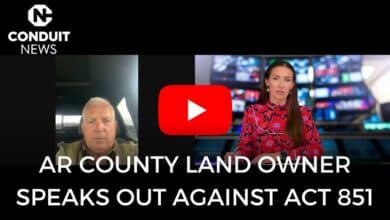Cities, counties, and school districts have special elections at random times throughout the year to raise taxes. It costs taxpayers an average of $200,000 per year to hold these elections. Taxpayers spent over $7.4 million on special elections from 1981-2016.[1] Voter turnout for these special elections averaged 19% for local sales tax elections, with a 77% pass rate of these tax increases on the people.[2] When held at the general election the pass rate was just 45%.[3]
During the recent legislative session, SB723 by Sen. Dave Wallace (R-Leachville) would have reformed special elections to increase voter turnout and streamline election dates. Rep. James Sturch (R-Batesville) helped defeat this reform on the House floor days before the session ended by walking out after first voting for the bill.
To fully understand just what Rep. Sturch did, one must understand what a “Sound the Ballot” challenge is. It is a procedural move in the Arkansas legislature to challenge close votes. In the House, bills are voted on by electronic buttons at each Representative’s seat. They can select “Yes”, “No”, or “Present” or choose to not vote. On each bill, the Speaker will announce “cast up the ballot” when everyone has voted and the total number of votes For, Against, and Present will display on the screen in the House Chamber. If a bill receives 51 votes, it passes. However, if at least five representatives raise their hands for a “Sound the Ballot” challenge the parliamentarian will “call the roll” of all the Yes votes.
For a Yes vote to stand under a “Sound the Ballot” challenge, a representative MUST be in their seat when their name is called. If a member is not in their seat, then their Yes vote is “struck” and subtracted from the total. For example, if a bill passes with 52 votes, at least 51 people must be in their seats when their names are called.
This video shows exactly what transpired during this Sound the Ballot challenge. It ends with Rep. James Sturch leaving his seat 28 seconds before his name is called, and killing the bill after voting Yes originally.
Video Proof of Rep. James Sturch’s Actions:
For SB723, Special Election Reform, a Sound the Ballot was called after it passed with 52 votes. Here is a rundown on how that bill originally passed, but ultimately failed after Rep. James Sturch walked out:
- Time Stamp 3:29 p.m. – SB723 passes with 52 votes. Rep. James Sturch voted “Yes”.
- Time Stamp 3:30 p.m. – Sound the Ballot Called for. Rep. Sturch is in his seat. He checks his phone and leans over and speaks to his seatmates.
- Time Stamp 3:30:45 – When calling the roll, Rep. Jim Dotson was first struck after he was not in his seat. Rep. Dotson was truly absent from the chamber during this vote and someone else must have pushed his vote button. The bill now has 51 votes, and any other strike will kill the bill.
- Time Stamp 3:31:51 – As the alphabetical roll call gets to the “P”s, Rep. Sturch gets up, leaves his seat, and leaves the House chamber.
- Time Stamp 3:32:18 – Rep. Sturch’s YES vote is struck because he is not in his seat when his vote is called, just 28 seconds after leaving his seat.
- Time Stamp 3:35 – at the next full wide shot of the chamber and on the very next bill, Rep. James Sturch is back in his seat and voting on the next bill.
This move by Rep. Sturch highlights some of the dirty political games at the Marble Palace in Little Rock. Without Conduit for Action pointing this out, many people would never know it happened.
The video above is also proof that the legislature needs more accountability through recording all committee meetings and video recordings in the Senate. Without accountability and transparency, the voter and taxpayer is left out in the cold. Conduit for Action will continue to advocate for the taxpayer’s interests and educating people on the benefits of economic freedom, limited government, and individual liberty.
[1] http://uca.edu/acre/files/2017/03/taxelections_infosheet.pdf
[2] Id.
[3] Id.







